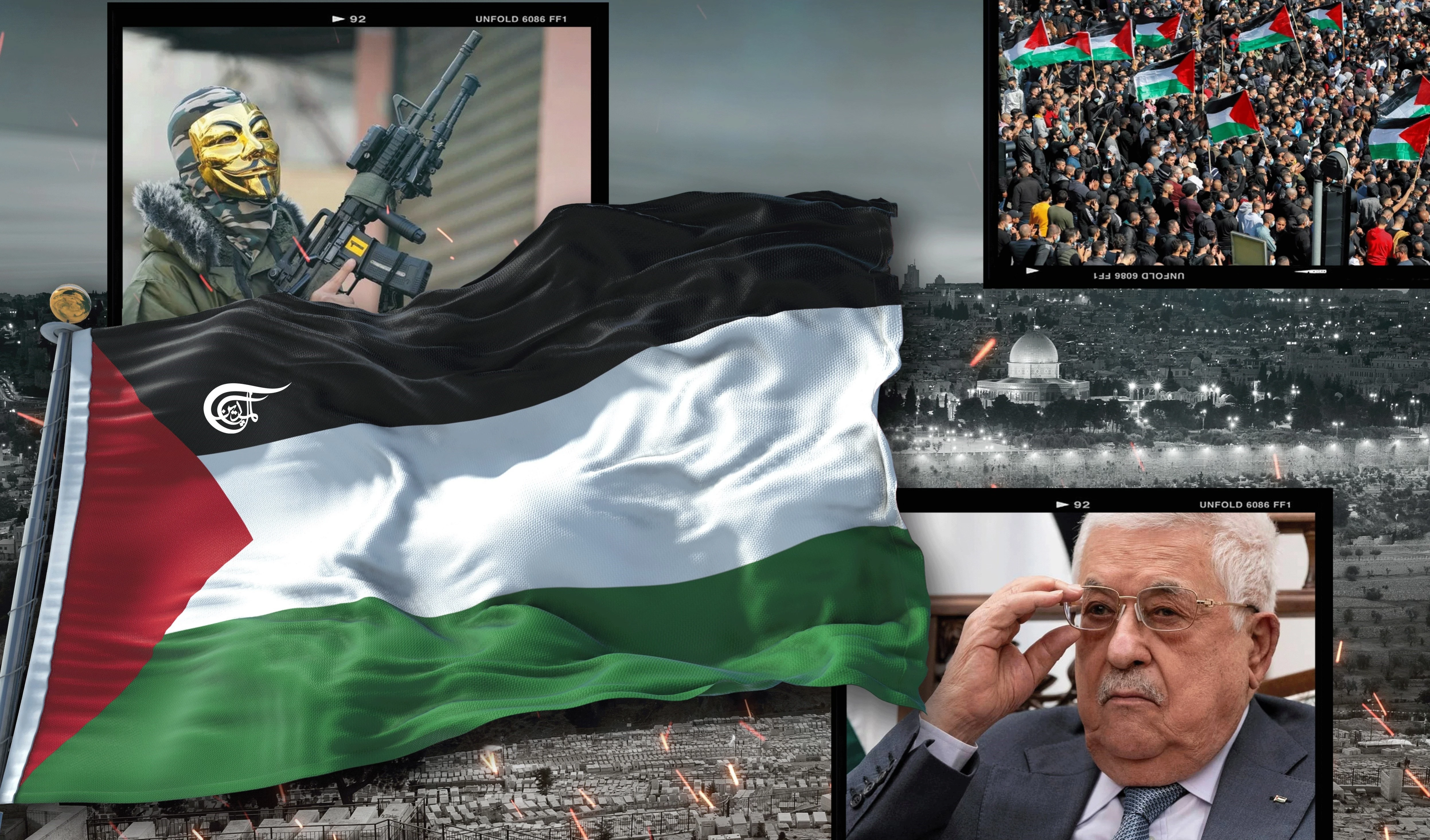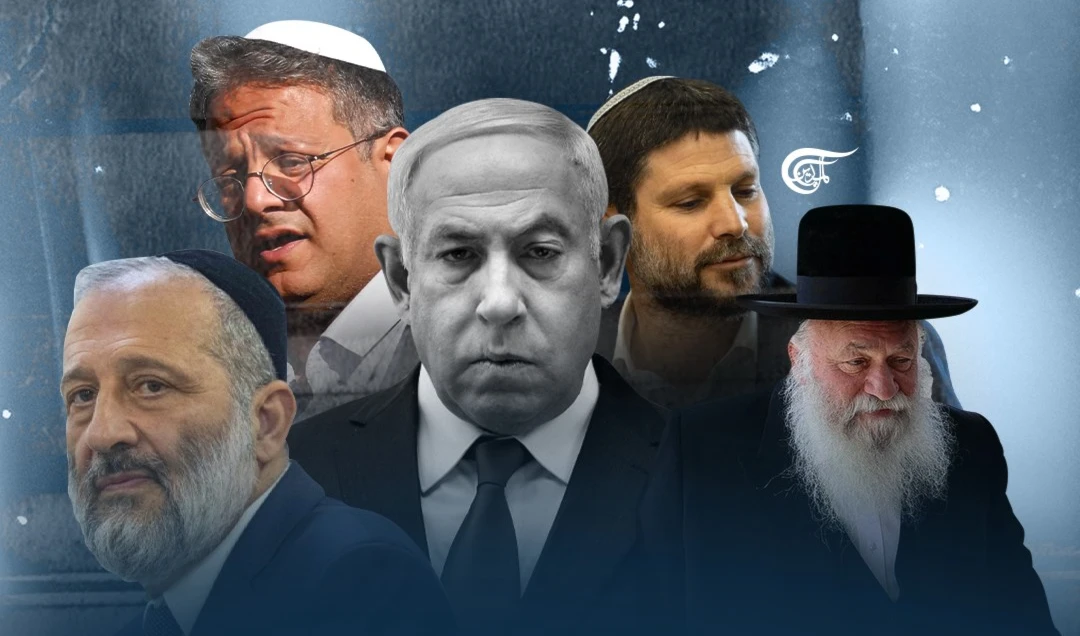Remembering Iran’s 1979 Revolution: The Fugitive’s Last Words: America has no Friends!
The Shah thought that with the unlimited support from America and “Israel”, he would be invincible, but the storm of the Islamic Revolution uprooted him and destroyed the pillars of his rule and the foundation of his regime.
-

Remembering Iran’s 1979 Revolution: The Fugitive’s Last Words: America has no Friends!
Scene I, in Tehran 31/12/1977,
The Emperor of Iran and the American President at a dinner party:
Carter spoke warmly of the Shah: “Iran, because of the great leadership of the Shah, is an island of stability in one of the more troubled areas of the world. This is a great tribute to you, Your Majesty, and to your leadership and to the respect and the admiration and love which your people give to you."
The Shah was ecstatic at the sound of these words, raised his glass, and toasted his guest in jubilation. How can he not be proud, and this is the President of the most powerful country in the world, coming in person to spend New Year's Eve with him.
Scene II, Washington, Summer 1979,
A phone call between Henry Kissinger and the American President:
“F*** the Shah”, Carter said in vulgar slang, in response to Kissinger's insistence that the Shah be allowed into America. "I am not going to welcome him here when he has other places to go," then hung up! Kissinger was bitterly disappointed by Carter's stubborn attitude but decided not to give up and continue working to save the Shah.
*****
Between the two scenes, the story of the Emperor is summarized. From “your great leadership” to "f*** the Shah” less than a year and a half separated the status of “King of Kings” (the literal translation of the title Shahanshah, which Muhammad Reza Pahlavi used to call himself) and the status of a servile fugitive who wanders the earth in search of a refuge.
By late 1977, the arrogance of the Shah toward his people (he was accustomed to Iranians kissing not only his hand but also his shoes) had reached its climax, to the point where he became politically blind and made him believe that no force on earth could shake his regime (the Shah had been ruling Iran since 1941). The rising opposition that Iran witnessed in recent years was, in the Shah’s eyes, no more than a storm in a teacup, and he will be able to quell it relying on the strength of his security apparatus (the Shah’s intelligence “SAVAK” was known for its fierceness and ruthlessness) and the loyalty of his generals (the Imperial Iranian Army was the largest and most heavily armed in the region). If, above that, he enjoyed unlimited support from America and “Israel”, it meant to him his victory over his enemies inside Iran would be inevitable. The Shah didn’t forget that America brought him back to his throne in 1953 when the Iranian nationalists succeeded in removing him (the American General Kermit Roosevelt had engineered a successful coup at the time, overthrowing the rule of Muhammad Mosaddeq and restoring the Shah to power), and thus went to the extreme, freeing America’s hand in Iran and enabling it to control all the pillars of the country - the oil, the army, the economy, and the media - believing this would give him a safety net toward his people if they revolted again.
Jimmy Carter himself was politically blind! It is not possible to explain his words about the greatness of the Shah and the stability of Iran otherwise. It is astonishing how far the American President was from reality! Were the intelligence and national security reports so weak that they were unable to predict the size and depth of the mass opposition to the Shah’s regime and its imminent fall?! Only thirteen months separated Carter's words and his legendary praise of the Shah and the latter's miserable flight from Iran running away from his rebellious people. Carter thought that the Shah was capable of survival and victory and that he was the winning horse in Iran, which has great strategic value in American planning for the region, and therefore there is nothing wrong with supporting the Shah to the maximum.
1978 was decisive. Opposition to the Shah intensified and expanded to include all parts of Iran. The popular revolution manifested itself in demonstrations, strikes, and closures that gradually increased until it began to disrupt large sectors of the country. The government and its apparatus began to become paralyzed due to the large number of those who joined the revolution and responded to the calls of its leader, coming from afar recorded on cassettes. The voice of Imam Khomeini was reaching everywhere in Iran, loudly calling for the people to be disobedient and aware of the traps and deception of the Shah’s regime and promising glorious victory over the tyrants. The Shah was brutal in defense of his regime and ordered the SAVAK to strike with an iron fist. Indeed, the Shah's security forces began shooting in order to kill, as the arrests were no longer useful. But every blood spilled was increasing the determination of the revolutionaries to carry on to the end. The security grip began to loosen and weaken, and the army was in danger of collapsing, with increasing numbers of its members joining the ranks of the revolutionaries. The masses of revolutionaries seized military barracks and vital installations in the capital, Tehran, and things began to get out of control, and the generals were no longer able to control the country, not even to ensure the security of the Shah himself.
Iran Out Of Control: The Emperor Became Homeless
The Shah was watching what was going on in disbelief. The scale of the popular opposition to him and the speed at which his regime and apparatus were collapsing shocked him. In the end, the Shah understood that he had no hope of remaining in Iran. He surrendered and decided to leave. But he was consoling himself by the hope that America would save him and would bring him back - just as it did in 1953. They cannot abandon me, the Shah said to himself. He began preparing for resorting to his protector and guarantor, to America.
The Shah's last journey began. State television announced that His Majesty the Emperor had left the country on a "vacation". The departure ceremonies were closer to escaping than to royal protocols worthy of the Shahanshah. The final farewell was limited to a very small group of confidants and entourage and devoid of the usual gaudy appearances. His first stop in his exile journey was Egypt, to his friend Sadat, with whom he formed an American-inclined alliance in the years that followed his coup against the Shah's enemy in Egypt (Gamal Abdel Nasser). Sadat received him at the airport and extended his hospitality to the fugitive Emperor (Did Sadat feel a similar fate?). The Shah spent six days on an island in the Nile, surrounded by the generosity and patronage of Sadat. After that, the Shah set off for his second stop in exile. He received an invitation from the King of Morocco, Hassan II (apart from "friendship" between the king and the Emperor, Hassan II knew that the Shah's personal fortune was about two billion dollars, and he was looking for a share of it). The Shah spent the first three weeks in Marrakesh in a luxurious palace surrounded by palm trees, not far from the Atlas Mountains. But soon things began to deteriorate and bad news followed him.
The developments that took place in Iran after his departure were very negative for him and indicated that the remnants of his regime were on the verge of complete disintegration, including the senior generals who became unable to encounter the popular tide and the revolutionary momentum after the triumphant return of Ayatollah Khomeini to the country. The whole world realized that Iran entered a new phase and that a revolutionary Islamic regime has begun to rise on the ruins of the Shah's regime. The first shock was from King Hassan II himself, who conveyed a message to the Shah that his stay in Morocco should not be long (Hassan II felt that the Shah had become a burden and a source of embarrassment for him in front of his people, who had no affection for the Shah. Morocco was also preparing for the meeting of the Organization of Islamic countries and the presence of the Shah there was not very welcome for many countries). The biggest shock came from the biggest ally and the only remaining hope for the Shah: from America. Carter decided, prompted by the recommendation of his Secretary of State Cyrus Vance, that the Shah is not welcome in America because his arrival in these difficult circumstances will make matters worse, complicate the situation inside Iran, and provoke the new regime, threatening the interests and even the lives of Americans present in Iran. Carter sent a representative who met with the Shah in Marrakesh and conveyed to him the new position of the US administration. The Shah was very frustrated and felt a stab in the back. "They are treating me like a rat," complained the Shah to his old friend in New York, the president of Chase Manhattan Bank, David Rockefeller when he called for help.
David Rockefeller was fully prepared to do whatever he could to help one of the bank's most important clients in the world. Rockefeller began to work and formed a “crisis cell” that included, in addition to himself, high-caliber figures in American politics: Henry Kissinger and John McCloy (he had previously served as director of the World Bank, and before that, he was the American High Commissioner in Germany after World War II). The pro-Shah lobby began to work by intense pressure on Carter and his administration in order to persuade them to allow the Shah to come to America (in fact, Rockefeller hoped that America would be able to return the Shah to rule as it did in the past, and if that happened, he and his bank would have a sky-high standing in Iran). But Carter and Vance were determined to avoid more problems with the new regime in Iran, and so they refused. Rockefeller and his associates had to act quickly and find a country that would accept the Shah now until their efforts with Carter and his administration would succeed later.
Rockefeller found the solution: the Bahamas! Indeed, he made arrangements with the Prime Minister of the Bahamas, something like bribery, in order to accept the fugitive Shah. In late March 1979, the Shah and his family arrived in the Bahamas after about ten weeks in Morocco. But the stay was not good in the Bahamas, because a large number of journalists, correspondents, and photographers arrived to follow the news of the fugitive Shah, and that caused him great inconvenience. To make matters worse, the Bahamian government changed its opinion about the Shah and asked him to leave within 10 days. So the Shah called his friend Rockefeller again, asking him to find another shelter for him. Rockefeller tried to persuade his friend, Chancellor of Austria, Bruno Kreisky, to allow the Shah to reside in Salzburg, without success. Henry Kissinger intervened and called his old friend, Mexican President Jose Portela, and persuaded him to accept the Shah (despite the opposition of the Mexican Foreign Ministry). The Shah arrived in Mexico in the fourth stop of his exile journey on 10/06/1979, and his stay there was reasonably comfortable in a luxurious villa rented for him. He was visited by Henry Kissinger and David Rockefeller. Also, former US President Nixon visited him. But the Carter administration has continued to turn its back on him completely.
A Miserable End for the Tyrant
The Shah's health began to deteriorate seriously (he had been hiding his cancer for years). The Shah's illness was an opportunity for the resumption of the pro-Shah lobby’s efforts in America “on humanitarian basis”. The Rockefeller-Kissinger-McCloy trio intensified their contacts with President Carter, his National Security Advisor Zbigniew Brzezinski, and Secretary of State Vance. "America should not treat a great friend in such a humiliating manner," said Rockefeller. As for Kissinger, he went so far as to threaten President Carter to sabotage his efforts in Congress to ratify the SALT agreement with the Soviet Union if he did not show sympathy to the Shah in his difficult condition. The Shah's lobby hired a famous doctor who went to examine his health condition. He came back with a report about the severity of his illness in order to convince Carter. “They told me he was on the verge of death and that he could only be treated in our hospitals here in America”, Carter later justified his decision to allow the Shah to enter America on 22/10/1979.
The news about the Shah's arrival in America was the spark that re-ignited the situation in Tehran. The revolutionaries raged, and soon after, the angry students stormed the American embassy and took those in it hostage, demanding the handing over of the Shah. From that moment, a terrible nightmare began for Carter and his administration that did not end until after 444 days and ended Carter's political life. Carter found himself compelled to abandon the Shah, and soon found a new home for him in one of the small countries revolving in the American orbit: Panama. The Shah was forced to leave for Panama, where he spent three months, sick, defeated, and broken, until his friend Sadat intervened again and invited him to Egypt to settle permanently. The Shah arrived in Cairo on 24/3/1980 and remained there until he died after three months. If the Shah lived a bit longer, he would have written his memoirs under the title: America has no friends!
Writer’s notes: About the sources
1- Henry Kissinger's written testimony on the fate of the shah was published by the Washington Post on November 29, 1979 under the title “Kissinger On The Controversy Over The Shah”. It is available online at:
https://www.washingtonpost.com/archive/politics/1979/11/29/kissinger-on-the-controversy-over-the-shah/a3153d91-02be-40d5-958b-8784c4991941/ in which he acknowledged the efforts of the Tripartite Lobby, consisting of him, Rockefeller and McCloy, to assist the Shah. Kissinger avoids any reference to his phone calls with President Carter, although he admitted that he had made five calls with senior State Department officials, including two with Secretary Cyrus Vance himself. Kissinger also admits that he arranged for the Shah to travel and reside in Mexico, while Rockefeller took care of his going to the Bahamas.
2- A long article published in The NewYork Times Magazine on May 17, 1981 titled “WHY CARTER ADMITTED THE SHAH”. Can be read via the link:
https://www.nytimes.com/1981/05/17/magazine/why-carter-admitted-the-shah.html In it, Carter admitted to saying "Fuck the Shah", but later mentioned it in a more polite form, "Blank the Shah", and that this happened during a meeting with Brzezinski and Cyrus Vance. The article says that Kissinger contacted President Jimmy Carter on 7-4-1979 and urged him to allow the Shah's entry into America, but Carter refused, justifying his position by the fierce opposition of Secretary of State Vance. Carter reiterated his refusal to allow the Shah to enter during a meeting two days later with David Rockefeller, who said the president "didn't want to hear anything about the Shah”.
3- Book “The Shah's Last Ride” for William Showcross. On page 241, he talks about Carter's outburst of anger at a meeting at the White House at the end of July 1979, and his saying "Fuck the Shah." Link:
https://books.google.jo/books?id=_bKHEMDQ16wC&pg=PA241&lpg=PA241&dq=carter+said+fuck+the+shah&source=bl&ots=RrvMKmeuhf&sig=ACfU3U0i4qNKHI1bE-NPpog0eTcUit3FpQ&hl=ar&sa=X&ved=2ahUKEwjGqfS8puvsAhUExhoKHfcIA0gQ6AEwCXoECAgQAg#v=onepage&q=carter%20said%20fuck%20the%20shah&f=false
4- “Foreign Affairs” magazine, Winter Issue 1978/1979, an article titled “Iran and the Crisis of 78” by James A. Bill. Link:
https://www.foreignaffairs.com/articles/iran/1978-12-01/iran-and-crisis-78

 Hussam AbdelKareem
Hussam AbdelKareem
 15 Min Read
15 Min Read









